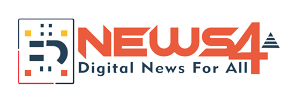Etiquette, at its core, is the set of unwritten rules and customs that guide polite and respectful behavior within a society. Far from being outdated or elitist, etiquette serves as a social lubricant, fostering comfortable interactions, building strong relationships, and preventing misunderstandings. In the diverse landscape of the United States, understanding these subtle cues, often referred to as social graces, is particularly valuable for both residents and newcomers alike. For a comprehensive overview, the definition of etiquette from Merriam-Webster provides a solid starting point.
While the U.S. prides itself on individualism and informality, there are clear expectations for conduct that promote civility and consideration. These norms are not rigid laws, but rather guidelines that, when followed, demonstrate respect for others and contribute to a harmonious environment. The importance of etiquette in modern society cannot be overstated; it provides a framework for courteous interactions that prevent awkwardness and build trust.
Why Etiquette Matters in the USA
- First Impressions: In both personal and professional settings, a strong first impression is crucial. Adhering to etiquette rules signals competence, trustworthiness, and respect.
- Effective Communication: Etiquette clarifies interactions, ensuring messages are received as intended and minimizing the risk of offense. This is especially true in a country that values direct yet polite communication.
- Building Relationships: Whether in the workplace or social circles, good manners foster trust and rapport, leading to stronger personal and professional connections.
- Confidence and Comfort: Knowing the expected behavior in various situations empowers individuals, reducing anxiety and allowing them to focus on the interaction itself.
- Respect for Diversity: The U.S. is a melting pot of cultures. Understanding general American etiquette, while also being sensitive to individual differences, demonstrates an open-minded and respectful attitude.

Key Areas of Etiquette in the USA
American etiquette encompasses a range of situations, from everyday greetings to formal dining. Here are some key areas to consider, along with their specific etiquette meaning:
1. Greetings and Introductions:
- Handshakes: A firm, brief handshake with direct eye contact is the standard greeting in both social and business settings. Avoid a limp or overly aggressive grip.
- Personal Space: Americans generally prefer more personal space than some other cultures. Aim for about an arm’s length distance during conversations. Avoid excessive physical touch with new acquaintances.
- Informality: While initial greetings might be formal (e.g., “Mr./Ms. Last Name”), Americans tend to move to a first-name basis relatively quickly, especially in casual settings. It’s often safe to use a first name if invited or if the other person uses yours.
- Small Talk: Engaging in brief, light conversation (small talk) is common and appreciated before diving into more serious topics. Topics like the weather, current events (non-controversial), or general well-being are good choices.

2. Communication:
- Directness: Americans generally value direct and clear communication. While politeness is key, beating around the bush can be frustrating.
- “Please” and “Thank You”: These are fundamental expressions of courtesy and are used frequently, even for small requests or favors.
- “Excuse Me” and “Sorry”: Used for minor bumps, interruptions, or when asking to pass in a crowded area.
- Active Listening: Making eye contact, nodding, and offering verbal affirmations show that you are engaged in the conversation. Avoid interrupting.
- Sensitive Topics: In casual settings, it’s generally best to avoid discussing highly divisive topics like politics, religion, or race, especially with people you don’t know well.
- Phone Etiquette: When on calls, be mindful of your tone, speak clearly, and avoid distractions. For detailed phone etiquette tips, always consider your environment and the purpose of the call.
- Email Etiquette: Professionalism extends to written communication. Always use clear subject lines, a professional greeting and closing, and be concise. For practical email etiquette examples, consider the context of your recipient and the message’s objective.
3. Dining Etiquette:
- Punctuality: Arriving on time for meals, especially if invited to someone’s home, is a sign of respect. If you anticipate being late, a courtesy call or text is appreciated.
- Tipping: Tipping etiquette USA is crucial; generally, 15-20% of the total bill is standard for good service in restaurants.
- Table Manners:
- Wait until everyone at the table has been served before starting to eat.
- Chew with your mouth closed and avoid loud eating sounds.
- Keep elbows off the table.
- Use serving utensils for communal dishes.
- Ask for items to be passed rather than reaching across the table.
- Napkins should be placed on your lap.
- For specific scenarios like a business lunch etiquette, remember to keep conversation light initially, avoid overly messy foods, and allow the host to initiate discussions about business.
- Paying the Bill: If you invite someone to a restaurant, you are generally expected to pay the bill. If splitting the bill, ensure it’s handled smoothly.

4. Public Behavior:
- Queueing (Lining Up): Americans generally form orderly lines and wait their turn in public places like stores, bus stops, and events. Cutting in line is considered rude.
- Holding Doors: It’s a common courtesy to hold a door open for someone immediately behind you.
- Noise Levels: Be mindful of noise levels in public spaces, especially when talking on the phone or listening to music.
- Hygiene: Basic personal hygiene, including showering regularly and using deodorant, is expected. Spitting in public is considered impolite.
- Travel Etiquette: When traveling, whether by air, train, or road, be considerate of fellow passengers regarding space, noise, and shared amenities.
5. Professional Etiquette:
- Punctuality: Being on time for meetings and appointments is paramount in American business culture.
- Dress Code: While dress codes vary by industry and region, it’s generally best to dress professionally, especially for initial meetings.
- Direct Communication: Be clear and concise in professional correspondence and discussions.
- Initiative: Taking initiative and demonstrating a “can-do” attitude are valued in the American workplace.
- Networking: Building professional relationships through networking events and platforms like LinkedIn is encouraged.
- Interview Etiquette: For job seekers, understanding interview etiquette tips is vital. This includes dressing appropriately, arriving on time, a firm handshake, maintaining eye contact, and sending a thank-you note afterward.
6. Digital Etiquette (Netiquette):
- In today’s digital age, netiquette rules are as important as traditional manners. This includes being respectful in online interactions, avoiding all caps (which can be perceived as shouting), refraining from spamming, and being mindful of privacy. Always assume good intent, but be clear in your communication to avoid misunderstandings.
7. Event-Specific Etiquette:
- Wedding Guest Etiquette: From RSVPing on time to choosing appropriate attire (avoiding white!), and respecting the couple’s wishes regarding social media, mindful behavior ensures you’re a welcomed guest.
- Funeral Etiquette: These are solemn occasions. Adhering to funeral etiquette guidelines typically involves dressing conservatively, arriving on time, offering sincere condolences, turning off cell phones, and being respectful of the grieving family’s wishes.
- Dating Etiquette Modern: While dating norms evolve, core principles remain. Being punctual, present (phone away!), communicative, and respectful of boundaries are key.
- Classroom Etiquette: For students, this includes arriving on time, participating respectfully, not interrupting, and being prepared.
- Gym Etiquette Rules: In shared fitness spaces, re-racking weights, wiping down equipment, and respecting others’ space are fundamental.
- Hospital Etiquette for Visitors: When visiting someone in a hospital, remember to keep visits short, be quiet, respect privacy, and follow hospital guidelines.

Learning and Improving Etiquette
For those looking to refine their social skills, various resources are available. Many individuals seek out etiquette classes USA offers, which can range from general social graces to specialized training in business or dining protocols. Additionally, a wealth of etiquette books best practices are often found in publications by renowned experts like Emily Post. Understanding cultural etiquette USA specific nuances can be a continuous journey, but it is one that profoundly enriches interactions and relationships in this diverse nation. For a deeper dive into modern etiquette principles, the Emily Post Institute remains a cornerstone resource.
Etiquette as a Journey
Etiquette in the USA, like in any country, is not a static list of rules but a dynamic reflection of cultural values. While these guidelines provide a strong foundation, observing those around you and being open to learning are key. Ultimately, proper behavior boils down to a few fundamental principles: consideration, respect, and honesty. By embodying these qualities, individuals can navigate social and professional situations in the United States with grace and confidence, building positive connections along the way.


